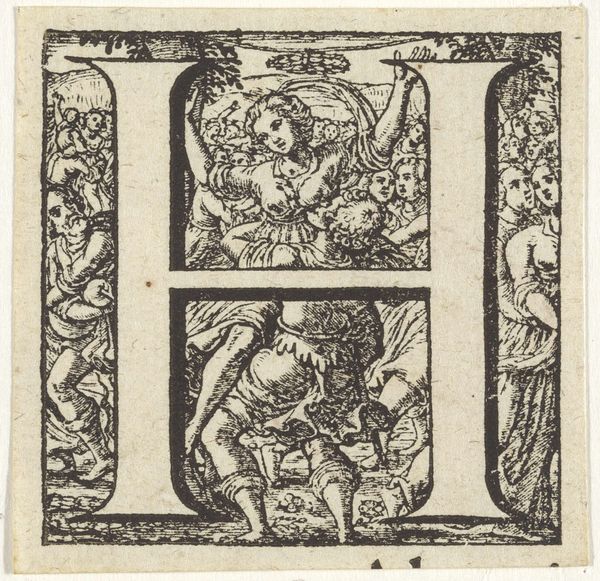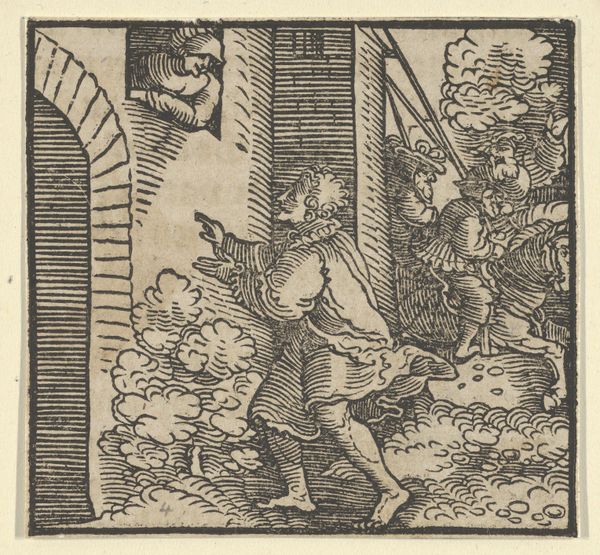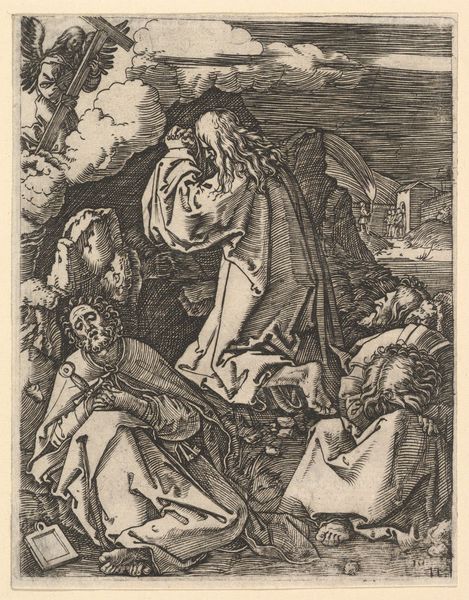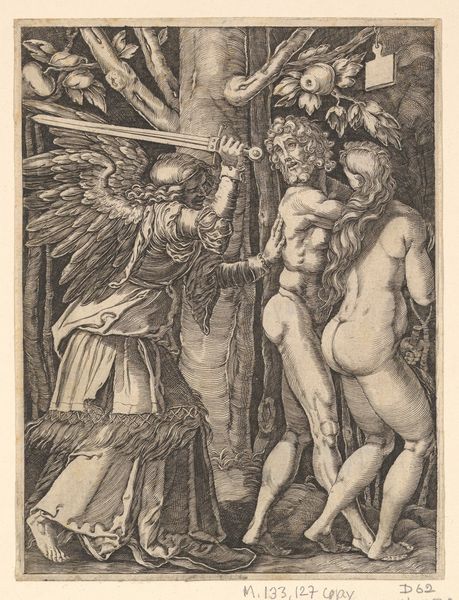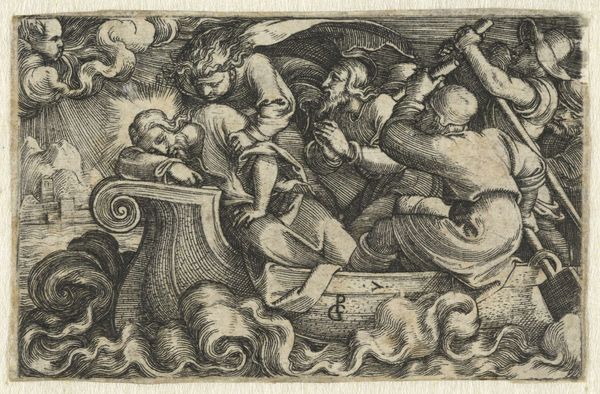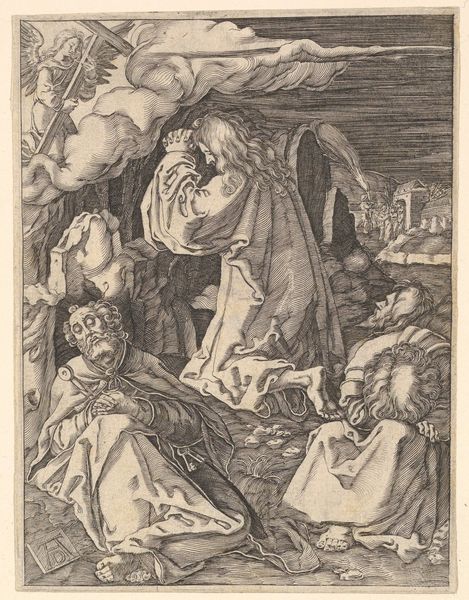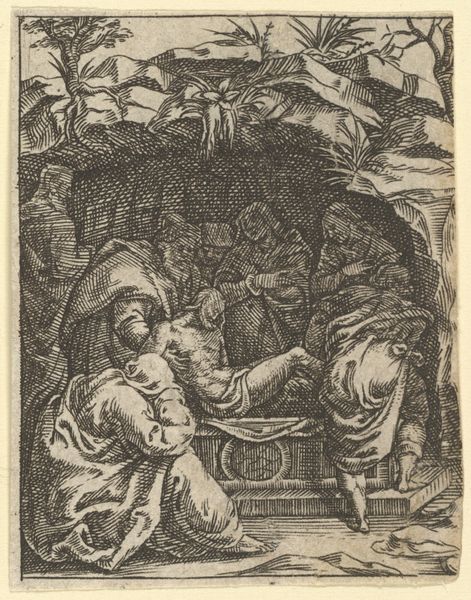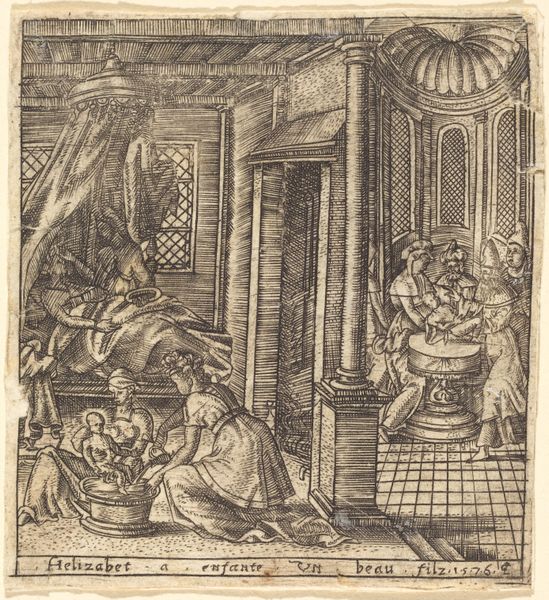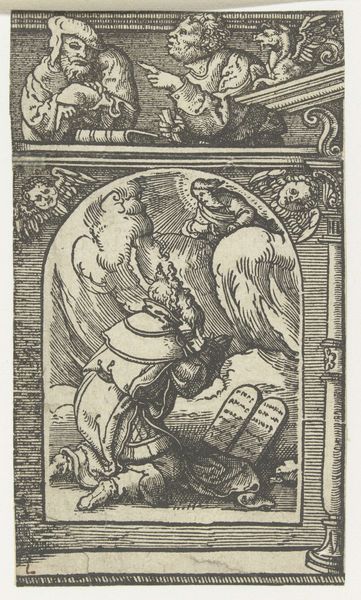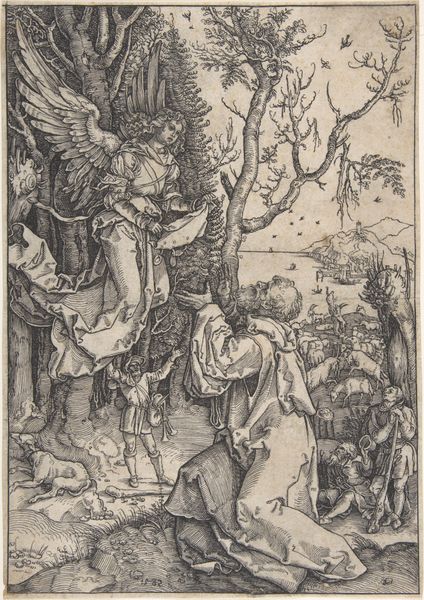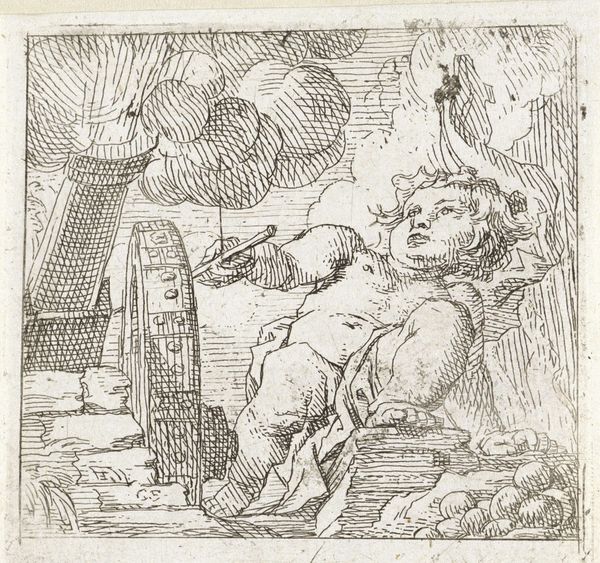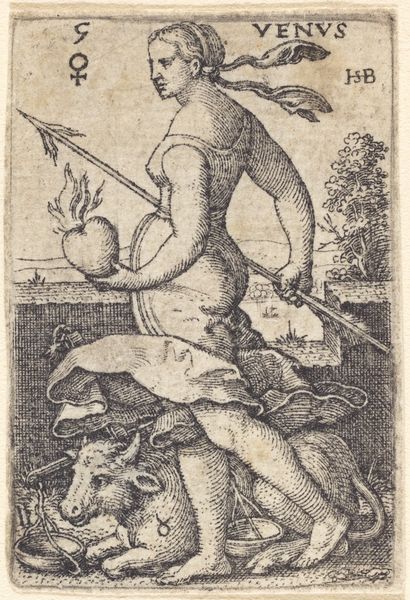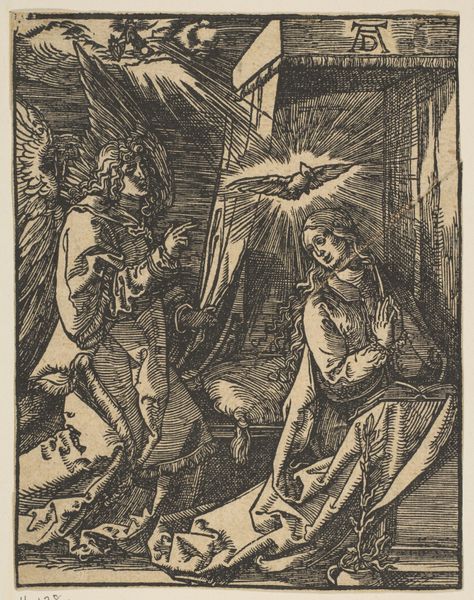
Ghismonda, Guiscardo, and the Prince of Salerno, from The Decameron 1534
drawing, print, woodcut, engraving
drawing
narrative-art
pen drawing
figuration
woodcut
northern-renaissance
engraving
Dimensions: Sheet: 2 3/4 × 2 7/8 in. (7 × 7.3 cm)
Copyright: Public Domain
Curator: Here we have Hans Schäufelein’s 1534 woodcut, “Ghismonda, Guiscardo, and the Prince of Salerno, from The Decameron,” currently residing at the Metropolitan Museum. Editor: The heavy blacks and stark whites really amplify the drama here; the claustrophobic composition creates a somber mood, almost oppressive. Curator: Indeed. It depicts a rather grim moment from Boccaccio's Decameron, a collection of novellas which definitely explored some scandalous behavior for its time. Schäufelein focuses here on Ghismonda, who has secretly married her father's servant Guiscardo, prompting deadly repercussions. Editor: The figures are enveloped in a swirling mass of lines. There's this overwhelming textile motif in the clothing and the canopy, and they visually communicate a sense of entrapment. Even Ghismonda's voluminous skirt has this weighty feel that adds to the feeling of her being pinned down. Curator: Absolutely, and remember that printmaking during the Northern Renaissance was closely linked with disseminating moral tales and social critiques to a wide audience. The density of the linework emphasizes the anguish of the scene. Ghismonda defied societal expectations about class and gender. Editor: I agree. If you look closer, though, you can observe subtle details, such as how their eyes are facing the same direction, perhaps emphasizing their forbidden union against societal expectations. The shading seems almost arbitrary but consistent throughout, to underscore the volume of those garments, really making them heavy and awkward looking. Curator: Exactly, and the architectural context also informs this understanding. We see the almost dungeon-like stone structures that hem them in. Editor: This print's visual weight becomes symbolic of their entrapment. Curator: This really amplifies that story's theme; society’s constraints can lead to utter tragedy. It is clear the artist wishes to create an oppressive mood around illicit and cross-class relationships. Editor: What really grabs me is how the medium—this harsh black-and-white woodcut—completely echoes the story's severe emotional landscape. The choice really serves to highlight how all-consuming these issues become when personal choice confronts deeply ingrained social taboos.
Comments
No comments
Be the first to comment and join the conversation on the ultimate creative platform.
